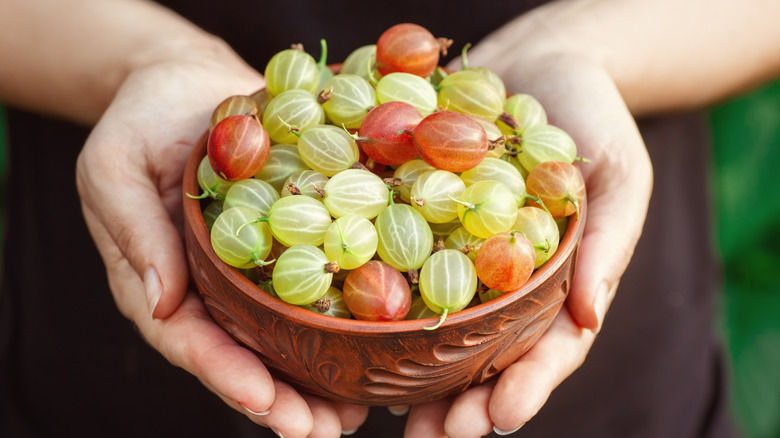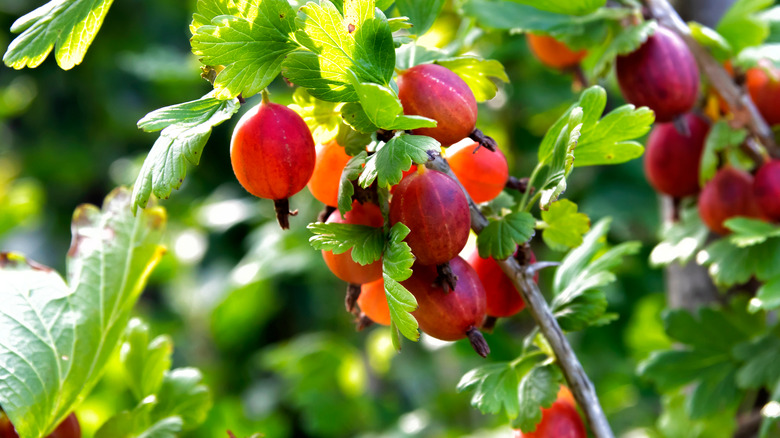The Reason Gooseberries Were Banned In The US
If you live in the U.S. and have heard of, or better yet, had the opportunity to eat a gooseberry, you are a rare bird. Gooseberries don't exactly line the shelves of your local grocery. In fact, it is a very real possibility that before you saw the image above, you didn't even know what a gooseberry looked like, despite the fact that there are several varieties native to the U.S.
There are European gooseberries and American gooseberries, both of which belong to the Grossulariaceae plant family. They can appear in a rainbow of various colors including yellow, green, red, purple, and black, and their translucent skin gives them a resemblance to table grapes. In Europe, they are often turned into jellies, tarts, pies, and wine and can even be grown in the extremely cold temperatures of the Arctic Circle.
And though they're not exactly healthy if they're drenched in refined sugars, you'll still benefit from their many nutrients. Gooseberries contain lots of vitamins C, B5, and B6, as well as copper, manganese, and fiber all of which are wonderful for heart health. But if gooseberries are so good for us, and can be sourced stateside, why don't we see them everywhere and have old American cookbooks filled with gooseberry recipes?
Illegal fruit
The U.S. government has outlawed many more things than alcohol in its time. Scottish haggis, which uses sheep's lungs, Kinder eggs, and wormwood absinthe was made illegal in the U.S. in 1971 in human food (via the National Archives). Because of avian gavage, the consumption of birds subjected to the practice is either illegal as is the case with ortolan, or publicly discouraged, as with foie gras. That is to say, gooseberries are not alone in the list of America's strange restrictions, but the reason why they were banned is more ecological and economic than for any concerns over health, safety, or ethics.
Gooseberries are low-maintenance, delicious, and nutritious plants, but while they're highly popular in Europe, they became federally banned at the beginning of the 20th century. According to the Agriculture Marketing Resources Center, this happened because the plant was discovered to carry a disease that was incredibly harmful to the white pine tree. This disease was called "white pine blister rust" and was deadly to the tree. To protect the tree and the industries which relied on the lumber, the gooseberries took the hit and for decades the fruit was left uncultivated in the U.S. To this day, Italian Berry says a few states still ban the plant — including Maine. But in 1966, the total federal ban was lifted and now you can buy gooseberries in stores like Trader Joe's or online.

